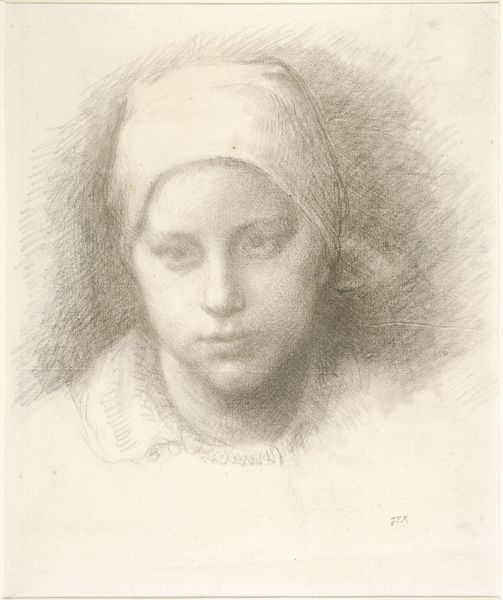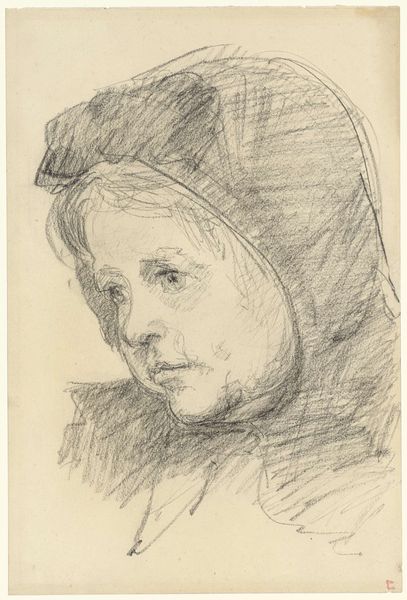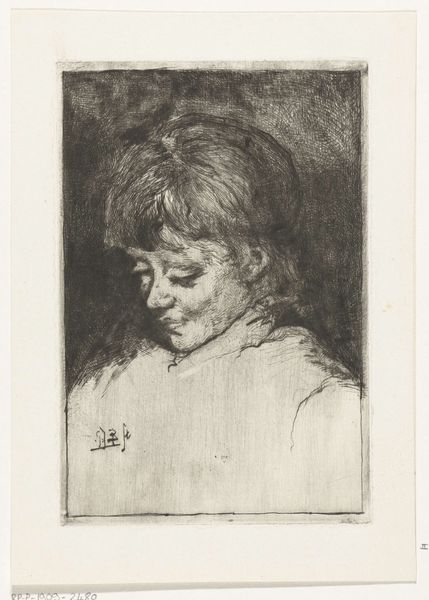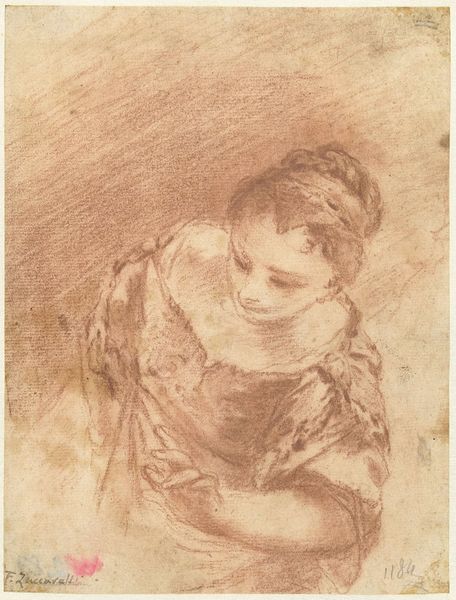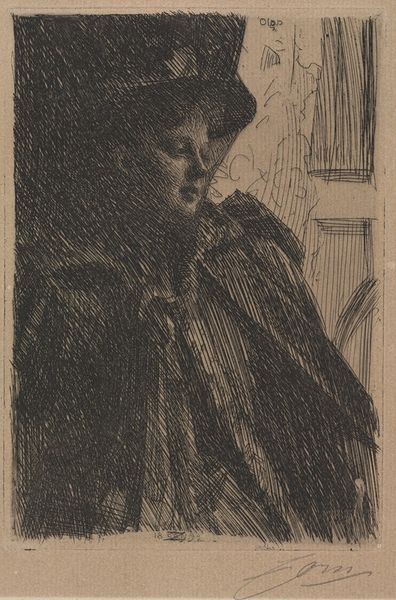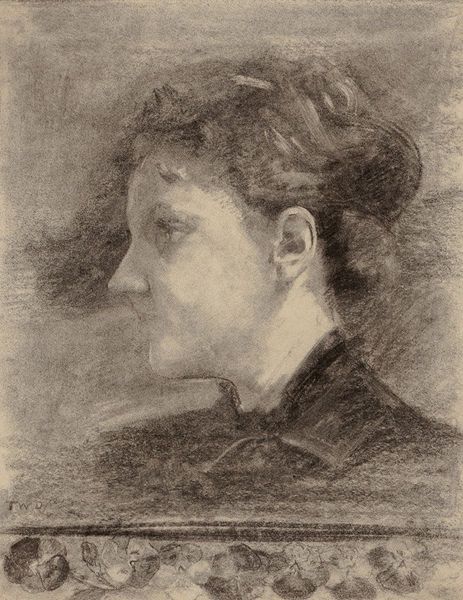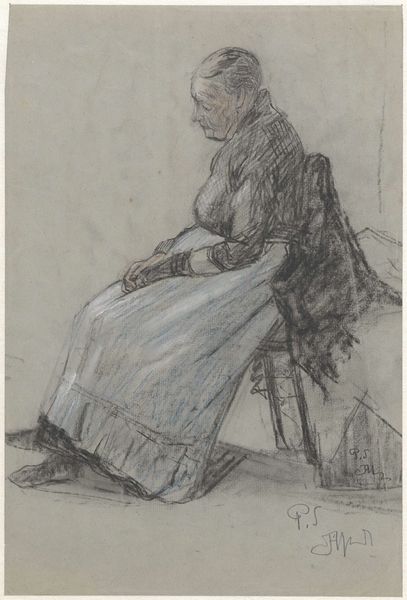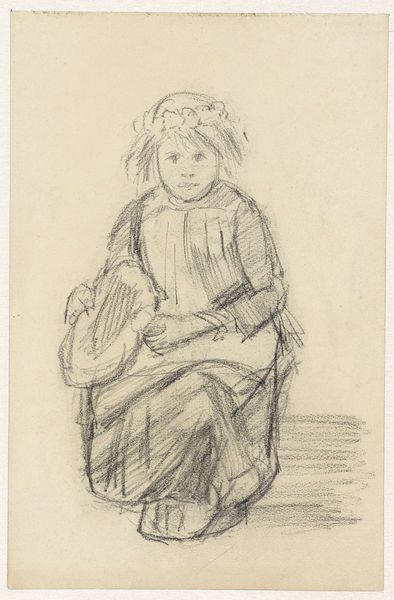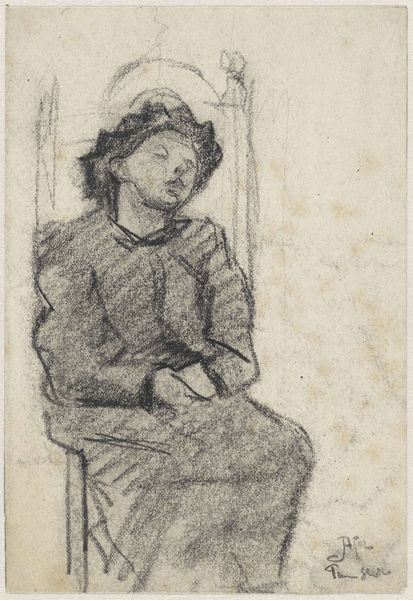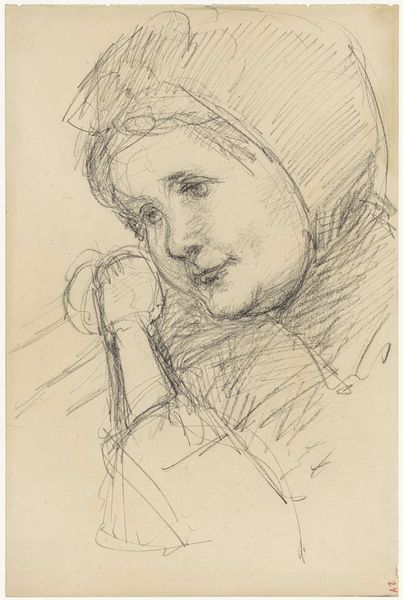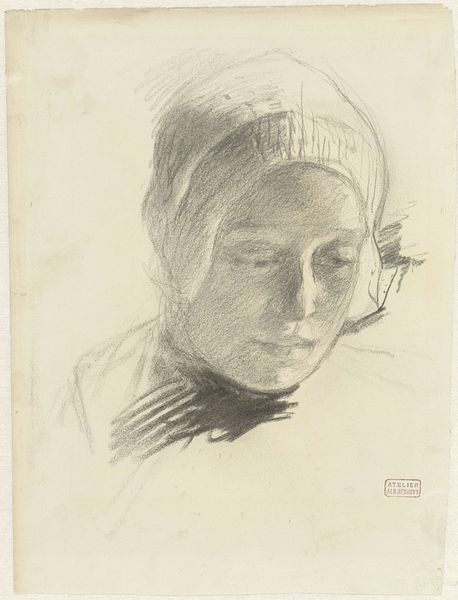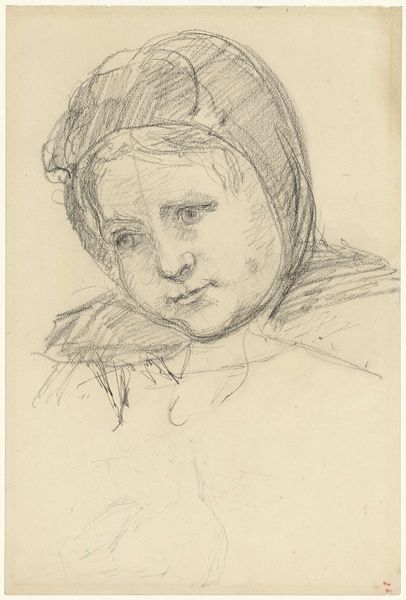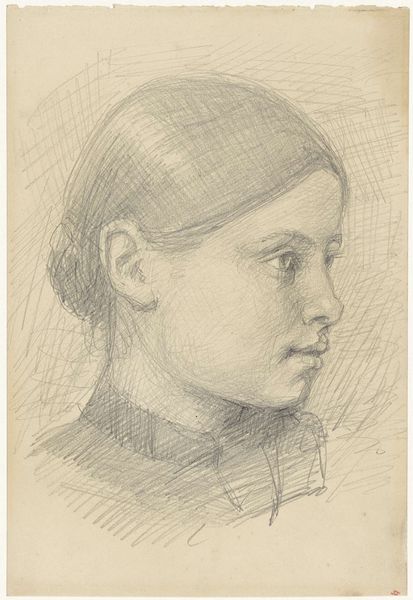
drawing, pencil, charcoal
#
portrait
#
pencil drawn
#
drawing
#
impressionism
#
charcoal drawing
#
form
#
pencil drawing
#
pencil
#
line
#
portrait drawing
#
charcoal
#
realism
Dimensions: height 274 mm, width 200 mm
Copyright: Rijks Museum: Open Domain
Curator: Immediately, a sense of quiet melancholy pervades. The figure’s downward gaze and soft shading create an atmosphere of introspection. Editor: Indeed. What we're looking at here is Jan Veth's 1886 pencil and charcoal drawing, "Portret van Wally Moes." It's currently held here at the Rijksmuseum. Curator: The stark contrast in textures – the smoothly smudged background against the more defined lines of the subject – really directs the eye. Note especially how the scarf, despite being simply rendered, anchors the composition. Editor: And Veth was known for his incisive character studies. Wally Moes, a writer herself, likely shared similar intellectual circles as Veth. The portrait hints at a shared progressive milieu, perhaps even feminist undercurrents present in Dutch intellectual life at the time. Curator: Yes, the very execution feels remarkably modern. The lines are economical yet expressive, especially when considered against some academic constraints that persisted in that era. Notice the intentionality of each stroke, a very deliberate abstraction occurring even within a realist framework. Editor: What strikes me is the possible conversation that this portrait might be hoping to inspire. By presenting Moes in such a contemplative, almost vulnerable state, is Veth prompting the viewer to consider the inner lives of women beyond the traditional societal roles they inhabited? Curator: Absolutely. There's a definite power dynamic at play here. The artist’s interpretation versus the subject’s self-presentation; always fascinating to consider. Veth avoids idealization; it's less about beauty and more about the presence of character, about an inner spirit rendered visible through masterful use of line and form. Editor: The drawing also provides some compelling commentary regarding Dutch art’s trajectory towards realism, perhaps a reaction to centuries of royal and mercantile artistic patronage. Curator: Ultimately, it is a remarkably potent work. A successful visual strategy in using minimalistic qualities that somehow speaks volumes about both the artist and the subject. Editor: An exquisite piece for our collection; this offers compelling insight into 19th-century intellectual circles, and what it meant for Dutch art to consider social realism outside its more popularly celebrated visual traditions.
Comments
No comments
Be the first to comment and join the conversation on the ultimate creative platform.
